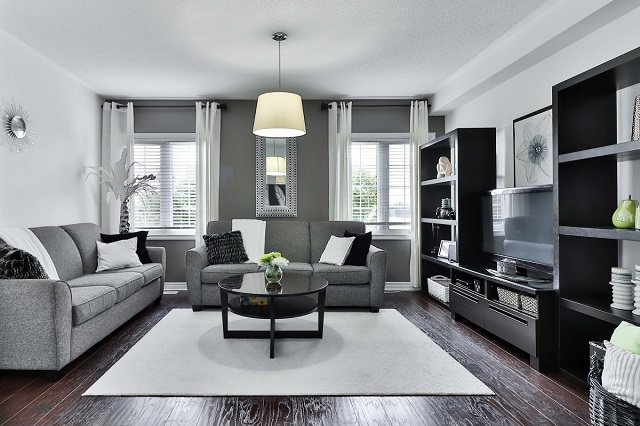Are you ready to give your home a fresh, new look without breaking the bank? DIY house painting is an exciting, cost-effective way to transform your space, add value, and express your personality. Whether you’re looking to revitalize your interior walls or update your home’s exterior, this comprehensive guide will provide you with the tips, tricks, and step-by-step instructions you need to achieve professional results on your own. In this blog post, we’ll explore everything from planning and preparation to choosing the right tools and techniques, ensuring your DIY house painting project is a success from start to finish.
Table of Contents
Why DIY House Painting?
Taking on a house painting project yourself can seem daunting at first, but the rewards are plentiful. Here are some compelling reasons to roll up your sleeves and dive into your DIY painting project:
- Cost Savings: Hiring professionals can be expensive. By doing it yourself, you can save a significant amount on labor costs.
- Personal Touch: DIY projects allow you to tailor every aspect of the job to your taste, ensuring your home truly reflects your style.
- Satisfaction and Skill Building: Completing a painting project yourself brings a sense of accomplishment and boosts your confidence in tackling future home improvement tasks.
- Flexibility: You have control over the timeline and can work at your own pace without the pressure of contractor schedules.
By embracing the DIY approach, you’re not only giving your home a makeover but also acquiring new skills that will serve you well in future projects.
Planning Your Project
Successful painting starts with meticulous planning. A well-thought-out plan can save you time, money, and stress later on. Consider these steps to ensure you’re ready before you pick up a brush:
1. Set Clear Goals
- Define the Scope: Decide whether you’re painting a single room, multiple rooms, or the entire exterior of your home.
- Establish a Budget: Factor in the cost of paint, supplies, and any unexpected expenses.
- Time Management: Estimate how long the project will take. Remember that thorough preparation and proper drying times are critical.
2. Create a Detailed Plan
- Sketch Your Ideas: Draw a rough layout of the areas you plan to paint. Identify areas that may need extra attention, like trim, doors, and accent walls.
- Research: Look up techniques and gather inspiration from DIY blogs, magazines, or social media platforms like Pinterest and Instagram.
3. Schedule Your Work
- Check the Weather: For exterior projects, choose a period with mild, dry weather to ensure optimal conditions for paint application and drying.
- Plan Around Your Routine: Consider your daily schedule, especially if you’re working in a frequently used space like the kitchen or living room.
Choosing the Right Colors and Paint
Selecting the right paint and colors is as important as mastering the painting technique. Here’s how to make choices that enhance your home’s aesthetic:
1. Understand Color Psychology
- Mood Setting: Colors can influence mood and behavior. For example, blues and greens are calming, making them perfect for bedrooms or bathrooms, while vibrant reds and yellows can energize spaces like kitchens and living rooms.
- Room Function: Consider the purpose of the room when choosing colors. Lighter hues can make small spaces appear larger, while darker colors can create a cozy, intimate atmosphere.
2. Evaluate Your Paint Options
- Latex vs. Oil-Based Paint: Latex paint is popular for interior projects due to its ease of use, quick drying times, and lower VOC (volatile organic compounds) content. Oil-based paints, while offering a durable finish, require solvents for clean-up and can have a stronger odor.
- Finish Matters:
- Matte/Flat: Ideal for hiding imperfections on walls but can be harder to clean.
- Eggshell/Satin: Offers a subtle shine and is easier to maintain.
- Semi-Gloss/Gloss: Durable and easy to clean, making them suitable for high-traffic areas or trim.
3. Test Samples
Before committing to a color, purchase small samples and apply them on a section of the wall. Observe the colors at different times of the day under various lighting conditions to ensure you love the look in every light.
Essential Tools and Materials
Having the right tools can make a world of difference in the ease and quality of your project. Here’s a checklist of essential supplies you’ll need:
1. Painting Tools
- Paintbrushes: Invest in high-quality brushes of varying sizes for cutting in, detailing, and broader strokes.
- Rollers and Trays: Rollers are excellent for covering large areas quickly, and trays help evenly distribute the paint.
- Drop Cloths: Protect your floors and furniture from accidental spills or splatters.
- Painter’s Tape: Essential for clean edges and protecting trim, baseboards, and adjacent surfaces.
- Ladders/Scaffolding: Ensure you have a stable ladder or scaffolding for reaching high or difficult areas safely.
2. Surface Preparation Tools
- Sandpaper: For smoothing surfaces and removing any old, flaking paint.
- Scrapers: Useful for peeling paint removal.
- Spackle and Putty Knives: To fill in holes, cracks, or other imperfections before painting.
- Cleaning Supplies: Mild detergent, sponge, or cloth to clean the surfaces before painting.
3. Safety Gear
- Gloves: Protect your hands from paint and solvents.
- Safety Glasses: Prevent splatters from getting into your eyes.
- Masks or Respirators: Especially important when sanding old paint or working with products that emit strong fumes.
Preparation: The Key to Success
Preparation is the unsung hero of any successful DIY painting project. Skipping this step can lead to uneven finishes, peeling paint, and a generally unprofessional look. Here’s how to prepare your surfaces properly:
1. Cleaning the Surfaces
- Remove Dust and Dirt: Use a damp cloth or sponge and a mild detergent solution to thoroughly clean walls, ceilings, and trim. Allow surfaces to dry completely.
- Degrease High-Traffic Areas: Kitchens and bathrooms often require a degreaser to remove stubborn grease and grime. A clean surface is essential for proper paint adhesion.
2. Repairing Imperfections
- Fill in Holes and Cracks: Use spackle or a patching compound to fill small holes, dents, or cracks. For larger areas, consider using a filler that is designed for the specific material you’re working on.
- Sand Smooth: Once repairs are dry, sand the area lightly to ensure a smooth, even surface. This step is crucial for achieving a professional finish.
3. Removing Old Paint
- Scraping and Sanding: For surfaces with peeling or chipped paint, use a scraper or sandpaper to remove as much loose paint as possible. In cases of extensive old paint, you might consider using a chemical paint stripper.
- Priming: Apply a primer to the repaired areas and any surfaces that have been sanded or stripped. Primer helps to create a uniform surface, improve paint adhesion, and enhance the durability of the finish.
Techniques for Interior Painting
Interior painting requires a blend of careful planning, technique, and patience. Here are some tried-and-true methods to help you achieve a flawless finish on your walls, ceilings, and trim.
1. Cutting In
Cutting in is the process of painting the edges where a roller can’t reach, such as corners, around windows, doors, and along baseboards.
- Use a Quality Brush: Choose a brush with angled bristles for precision.
- Steady Your Hand: Use painter’s tape to mark boundaries if needed. This ensures clean, crisp lines.
- Practice Makes Perfect: Don’t be discouraged if your first few strokes aren’t perfect. Take your time to create a consistent edge.
2. Rolling the Walls
Rolling is an efficient way to cover large areas quickly, but proper technique is crucial to avoid streaks and uneven coverage.
- Load the Roller Evenly: Dip the roller in the tray, roll it along the tray’s slope to distribute the paint evenly, and avoid overloading it.
- Work in Sections: Start at the top of the wall and work your way down. Use a “W” or “M” pattern to ensure the paint is spread evenly.
- Feather the Edges: As you finish a section, lightly roll over the edges to blend the new paint with the already painted areas.
3. Layering for Perfection
- Multiple Coats: Generally, two coats are recommended for a smooth, durable finish. Allow the first coat to dry fully before applying the next.
- Even Application: Ensure each coat is applied evenly. If you notice any streaks or patchiness, lightly sand the area once dry and apply a touch-up coat.
4. Special Techniques
- Textured Finishes: For a unique look, consider using textured rollers or applying techniques such as sponging or rag rolling. These methods can add depth and interest to your walls.
- Accent Walls: To create a focal point, choose one wall in the room to paint a contrasting color or use stencils for a patterned effect. Accent walls can dramatically change the ambiance of a room.
Tips for Exterior Painting
Exterior painting poses its own set of challenges. Weather conditions, surface types, and the natural wear and tear of outdoor elements all factor into the equation. Here’s how to tackle exterior painting with confidence:
1. Timing is Everything
- Weather Considerations: Choose a time with mild temperatures and low humidity. Avoid painting during extreme heat, rain, or high winds.
- Plan for Drying: Allow ample drying time between coats, especially if the weather is humid. Check the paint manufacturer’s guidelines for drying times.
2. Surface Preparation for Exteriors
- Power Washing: For exteriors, a power washer can be invaluable in removing dirt, mildew, and old peeling paint. This ensures a clean surface for the new coat.
- Repair and Prime: As with interior surfaces, repair any cracks or damage and apply a primer that’s suitable for exterior use. This step is particularly important for surfaces exposed to the elements.
3. Application Techniques
- Brush vs. Roller vs. Sprayer: While brushes and rollers are common for exterior projects, paint sprayers can also be effective for large surfaces. However, they require careful masking of windows, doors, and landscaping to avoid overspray.
- Work in Sections: Divide your exterior surfaces into manageable sections. This helps maintain a wet edge, reducing the chances of lap marks.
- Multiple Coats: Similar to interior projects, applying two coats of paint is typically recommended to achieve the best protection and color depth.
Safety and Environmental Considerations
Your safety should always come first when undertaking a DIY project. Here are some crucial safety tips and environmental considerations to keep in mind:
1. Personal Safety
- Ventilation: When painting indoors, ensure your workspace is well-ventilated. Open windows and use fans to help disperse fumes.
- Protective Gear: Always wear gloves, safety glasses, and masks (or respirators) to protect yourself from paint fumes and dust particles.
- Ladder Safety: If you need to use a ladder or scaffolding, ensure it is stable and set up on a flat, secure surface. Always follow the manufacturer’s guidelines.
2. Environmental Responsibility
- Low-VOC and Eco-Friendly Options: Choose paints that are low in volatile organic compounds (VOCs) to reduce indoor air pollution and protect your health.
- Proper Disposal: Dispose of paint, solvents, and other hazardous materials according to local regulations. Many communities have special collection programs for leftover paint and related supplies.
- Sustainable Practices: Consider recycling or repurposing old brushes and other materials when possible. Opting for high-quality, durable products can reduce waste in the long term.
Troubleshooting Common Painting Issues
Even with thorough planning and preparation, challenges can arise. Here are some common issues you might encounter and how to address them:
1. Drips and Splatters
- Prevention: Use drop cloths and painter’s tape to protect surrounding areas. When applying paint with a roller or brush, avoid overloading the tool.
- Solution: If drips occur, allow the paint to become tacky, then carefully sand down the affected area before repainting.
2. Uneven Coverage
- Diagnosis: Uneven coverage may result from poor surface preparation, inadequate priming, or applying the paint too thickly.
- Fix: Sand lightly between coats to smooth the surface, and consider applying an additional coat where necessary.
3. Peeling or Bubbling Paint
- Causes: Peeling or bubbling is often due to poor adhesion, which can be the result of a dirty surface, moisture, or incompatible paint types.
- Remedy: Remove the peeling paint, thoroughly clean and sand the surface, and then reapply a suitable primer before painting again.
4. Color Inconsistencies
- Testing: Always test your paint color on a small, inconspicuous area before committing to the entire wall.
- Adjustment: If the color looks different in various lights or after drying, you might need to adjust your choice or consider mixing paints to achieve a more consistent hue.
Finishing Touches and Clean-Up
Once you’ve applied your paint and allowed it to dry completely, it’s time for the final touches and clean-up, which are just as important as the painting process itself.
1. Removing Painter’s Tape
- Timing: Remove painter’s tape while the paint is still slightly tacky or just fully dry to avoid peeling.
- Technique: Pull the tape back on itself at a 45-degree angle for the cleanest lines.
2. Touch-Ups
- Inspection: After the paint has dried, inspect the surfaces for any missed spots or areas needing an extra coat.
- Tools: Use a small brush to carefully touch up these areas. Patience during this stage can make a significant difference in the final result.
3. Clean-Up
- Cleaning Tools: Clean your brushes, rollers, and other tools immediately after painting. For latex paint, warm soapy water usually works well; for oil-based paints, you’ll need the appropriate solvent.
- Storage: Properly store any leftover paint in sealed containers for future touch-ups. Label the containers with the color and date for reference.
4. Post-Project Maintenance
- Curing Time: Allow your newly painted surfaces to cure fully before moving furniture or hanging decorations. This ensures the paint has reached its maximum durability.
- Regular Cleaning: Keep your painted surfaces looking fresh by dusting regularly and cleaning as needed. Use gentle cleaning methods to avoid damaging the finish.
Conclusion
DIY house painting is not just a way to save money—it’s an opportunity to put your personal stamp on your home while gaining valuable skills along the way. From the initial planning stages to the final clean-up, each step of the process is crucial in achieving a professional-looking result. By taking the time to prepare your surfaces, choosing the right tools and materials, and applying careful techniques, you can transform any space into a vibrant, inviting environment.
Remember, patience and attention to detail are your best allies in any painting project. Whether you’re refreshing a single room or reimagining your entire home, the tips and techniques outlined in this guide will help you navigate common challenges and celebrate your success. Embrace the journey, experiment with colors and textures, and most importantly, have fun bringing your vision to life.
Now that you’re armed with these DIY house painting tips, it’s time to roll up your sleeves, set up your workspace, and get started. Happy painting!
Additional Resources and Inspiration
If you’re looking for further inspiration or detailed tutorials, consider checking out these resources:
- DIY Blogs and Websites: Sites like The Spruce, Houzz, and DIY Network offer a wealth of ideas, step-by-step guides, and troubleshooting tips.
- YouTube Tutorials: Visual learners will benefit from video tutorials that walk you through the process of everything from surface preparation to advanced painting techniques.
- Local Home Improvement Stores: Many stores offer free workshops or classes on home improvement projects, including painting. Take advantage of these opportunities to learn from the experts and ask questions.
Final Thoughts
Undertaking a DIY house painting project may seem intimidating at first, but with careful planning, the right tools, and a little creativity, you can achieve stunning results. Remember that every project is a learning experience, and even if you encounter challenges along the way, the skills you gain will be invaluable for future projects.
Don’t hesitate to experiment with different styles, finishes, and techniques. Whether you choose to go bold with vibrant accent walls or opt for a more understated, classic look, the key is to create a space that feels uniquely yours. Your home is a canvas waiting for your personal touch—so pick up that brush, unleash your creativity, and transform your living space one stroke at a time.
Happy painting, and here’s to turning your house into the home of your dreams!
This blog post is intended to serve as a comprehensive guide to DIY house painting tips. For specific advice related to your home’s conditions or if you’re dealing with hazardous materials like lead-based paint, consult with a professional before proceeding with your project.
By following the guidelines above, you can embark on your next painting project with confidence. Not only will you enjoy the satisfaction of a job well done, but you’ll also create a space that reflects your personality and style. Whether it’s a single accent wall or a full home makeover, these DIY house painting tips are your ticket to a refreshed, vibrant living environment. Enjoy every step of the journey, from planning to that final, satisfying clean-up, and let your creativity shine through every brushstroke!



